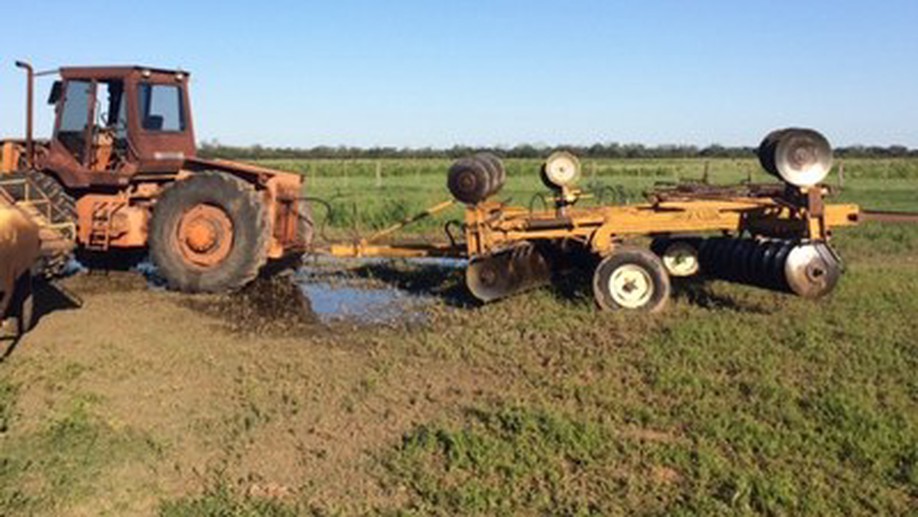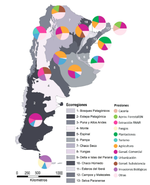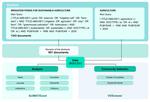Biography
I am interested in understanding the forces of land-use change in agricultural frontiers (especially in the South American Gran Chaco) and how economic, conservation, or zoning policies can influence them now or in the future.
I also study the territorial divergences of transboundary eco-regions in South America and the socio-economic factors that may explain differences in their human-natural systems.
Interests
- Land-Use Change
- Landscape Ecology
- Agricultural Frontiers
- Territorial Divergences
Education
-
PhD in Natural Sciences, 2017
Humboldt-University of Berlin (HUB) · Department of Geography · Germany
-
Msc in Geo-Information and Remote Sensing, 2006
Wageningen University & Research · Netherlands
-
BSc in Environmental Sciences, 2003
University of Almería · Spain
Featured Publications

Drivers of agricultural land-use change in the Argentine Pampas and Chaco regions
Agricultural expansion and intensification in South America’s dry forests and grasslands increase agricultural production, but also result in major environmental trade-offs. The Pampas and Chaco regions of Argentina have been global hotspots of agricultural land-use change since the 2000s, yet our understanding of what drives the spatial patterns of these land-use changes remains partial. We parameterized a net returns model of agricultural land-use change to estimate the probability of agricultural expansion (conversions of woodlands to either cropland or grazing land) and agricultural intensification (conversion of grazing land to cropland) at the 1-km scale for the years 2000 and 2010. Uniquely, our model allowed us to quantify the importance of underlying causes (i.e., changes in agricultural profit) and spatial determinants (i.e., soil fertility, distance to markets, etc.), for Argentina’s prime agricultural regions as a whole. We found that cropland and grazing land expansion into woodlands was much less sensitive to changes in profit-related factors than agricultural intensification. Profit-related variables, were a particularly strong cause of intensification in the Pampas, where cropland profits rose by 29% (compared to 18% in the Chaco). This suggests that further conversions of grazing land to cropland in the Pampas and Chaco is likely as long as agricultural demand, and thus returns to agriculture, continue to be high. The moderate impact of profit-related factors on affecting woodland conversion rates also suggests a limited potential of economic policies that affect marginal profits (e.g., taxes or subsidies) to alter deforestation rates and patterns in major ways. Policies that target socio-economic variables not included in our profit-focused framework (e.g., capital availability), area-based interventions (e.g., land zoning), or less-profit oriented actors (e.g., via community-based management) might be more effective in addressing deforestation rates in the Chaco.
Recent Publications
Challenges in attributing avoided deforestation to policies and actors: Lessons from provincial forest zoning in the Argentine Dry Chaco
Experience
Post-doctoral researcher
Latinamerika-Institut (LAI) - Freie University Berlin & Earth Observation Lab. Geography Department, Humboldt University Berlin
Post-doctoral researcher
Institute of Regional Ecology (IER), National University Tucuman
Post-doctoral researcher
Geography Department, Humboldt-University of Berlin
Research assistant
Geography Department, Humboldt-University of Berlin
Spatial and GIS analyst
Urban Research Center, University of Western Sydney
GIS and Remote Sensing Teaching Contractor
School of Environment and Life Sciences, University of Newcastle
GIS Researcher
Alterra Research Center, Wageningen
Intern
Department of Biotope and landscape protection. German Federal Agency for Nature conservation, Bonn
Non-doctor Researcher
Department of Plant Biology and Ecology, University of Almeria
Student Collaborator
Department of Applied Biology, University of Almeria
Grants and scholarships
DAAD- research stay UC-Berkeley and Stanford University
Elsa-Newman Berlin. Doctoral studies
Research-Department Plant Biology and Ecology. University Almeria, Spain
Erasmus - University of Glasgow, Scotland
Contact
- +49 30 838 68501
- Boltzmannstr. 1, Berlin, B 14195
- ZI Lateinamerika-Institut der Freien Universität Berlin







